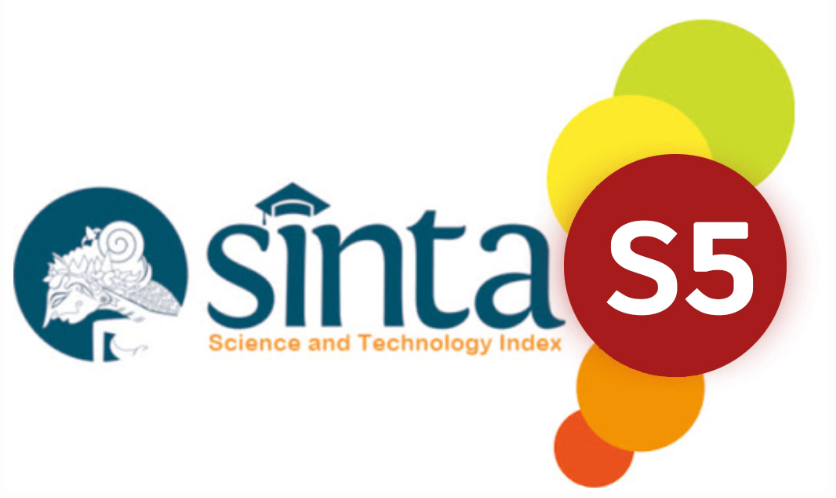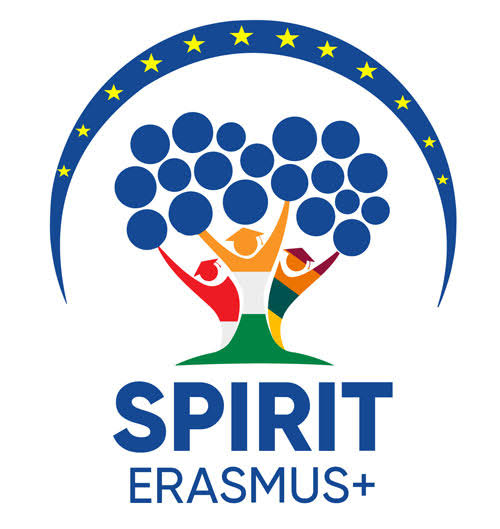Description of Potential PTSD in Students Surviving Covid-19 at the Faculty of Medicine, Andalas University
DOI:
https://doi.org/10.32734/sumej.v8i1.11588Keywords:
college student, PCL-5, PTSD, stressor, survivor COVID-19Abstract
Background: The Covid-19 pandemic has become a potentially traumatic event that can trigger the development of Post-Traumatic Stress Disorder (PTSD), especially in Covid-19 survivors. The study found that college students (aged 16 to 25 years) are at the most significantly risk for exposure to potentially traumatic events. Objective: To describe the potential for PTSD in students who survived Covid-19 at the Faculty of Medicine, Andalas University. Methods: This research is a descriptive study with a case-control design. A total of 167 student survivors of Covid-19 participate in the study. Data were obtained by the PTSD Checklist for DSM-5 (PCL-5) questionnaire digitally. Results: The study found that 18% of Covid-19 survivor students at the Faculty of Medicine, Andalas University had the potential to experience PTSD. The potential for PTSD is more susceptible to being experienced by male Covid-19 survivor students (30.4%), younger age, and experienced clinical symptoms of moderate illness Covid-19 (29,2%). Alterations in mood and cognition symptoms domain are the most dominant symptoms of PTSD experienced by study subjects with potential PTSD. Conclusion: Most study subjects with potential PTSD don’t experience stressors like life-threatening events, exposure to news about Covid-19, or social isolation.
Downloads
References
Wang C, Horby PW, Hayden FG, Gao GF. A novel coronavirus outbreak of global health concern. Lancet. 2020;395(10223):470–3. doi: 10.1016/S0140-6736(20)30185-9.
Susilo A, et al. Coronavirus Disease 2019: Tinjauan Literatur Terkini. J Penyakit Dalam Indones. 2020;7(1):45. doi: 10.7454/jpdi.v7i1.415.
Hossain MM, et al. Epidemiology of mental health problems in COVID-19: A review. F1000Research. 2020;9:636.
Mazza MG, et al. Anxiety and depression in COVID-19 survivors: Role of inflammatory and clinical predictors. Brain Behav Immun. 2020;89:594–600.
Yuan Y, et al. Prevalence of post-traumatic stress symptoms and its associations with quality of life, demographic and clinical characteristics in COVID-19 survivors during the post-COVID-19 era. Front Psychiatry. 2021;12:665507. doi: 10.3389/fpsyt.2021.665507.
Sekowski M, et al. Risk of developing post-traumatic stress disorder in severe COVID-19 survivors, their families and frontline healthcare workers: What should mental health specialists prepare for. Front Psychiatry. 2021;12:562899. doi: 10.3389/fpsyt.2021.562899.
Xiao S, Luo D, Xiao Y. Survivors of COVID-19 are at high risk of posttraumatic stress disorder. Glob Health Res Policy. 2020;5:1–3. doi: 10.1186/s41256-020-00155-2.
Vindegaard N, Benros ME. COVID-19 pandemic and mental health consequences: Systematic review of the current evidence. Brain Behav Immun. 2020;89:531–42.
Ju Y, et al. Prevalence and predictors of post-traumatic stress disorder in patients with cured coronavirus disease 2019 (COVID-19) one month post-discharge. Eur J Psychotraumatol. 2021;12(1):1915576. doi: 10.1080/20008198.2021.1915576.
Arieh S, Israel L, Charles M. Post-traumatic stress disorder. N Engl J Med. 2017;376(25):2459–69. doi: 10.1056/NEJMra1612499.
Jakel RJ. Posttraumatic stress disorder in the elderly. Clin Geriatr Med. 2020;36(2):353–63. doi: 10.1016/j.cger.2019.11.013.
Compean E, Hamner M. Posttraumatic stress disorder with secondary psychotic features (PTSD-SP): Diagnostic and treatment challenges. Prog Neuropsychopharmacol Biol Psychiatry. 2019;88:1–26. doi: 10.1016/j.pnpbp.2018.08.001.
Chi X, et al. Posttraumatic stress symptoms among Chinese college students during the COVID-19 pandemic: A longitudinal study. Front Public Health. 2021;9:759379. doi: 10.3389/fpubh.2021.759379.
Cusack SE, et al. Prevalence and predictors of PTSD among a college sample. J Am Coll Health. 2019;67(2):123–31. doi: 10.1080/07448481.2018.1462824.
Chi X, et al. Prevalence and psychosocial correlates of mental health outcomes among Chinese college students during the coronavirus disease (COVID-19) pandemic. Front Psychiatry. 2020;11:803. doi: 10.3389/fpsyt.2020.00803.
Sultana MS, Khan AH, Hossain S, Hasan MT. Mental health difficulties in students with suspected COVID-19 symptoms and students without suspected COVID-19 symptoms: A cross-sectional comparative study during the COVID-19 pandemic. Child Youth Serv Rev. 2021;128:1–9.
Li Y, et al. Psychological distress among health professional students during the COVID-19 outbreak. Psychol Med. 2021;51(11):1–3. doi: 10.1017/S0033291720001555.
Dixit S, et al. The impact of post-traumatic stress of SARS-CoV-2 affliction on psychological and mental health of student survivors: Cross sectional study. Front Public Health. 2022;10:845741. doi: 10.3389/fpubh.2022.845741.
Nagarajan R, Krishnamoorthy Y, Basavarachar V. Prevalence of post-traumatic stress disorder among survivors of severe COVID-19 infections: A systematic review and meta-analysis. J Affect Disord. 2022;15:52–9.
Li X, Fu P, Fan C, Zhu M, Li M. COVID-19 stress and mental health of students in locked-down colleges. Int J Environ Res Public Health. 2021;18(2):771. doi: 10.3390/ijerph18020771.
Bellan M, et al. Respiratory and psychophysical sequelae among patients with COVID-19 four months after hospital discharge. JAMA Netw Open. 2021;4(1):e2036142. doi: 10.1001/jamanetworkopen.2020.36142.
Perrin M, et al. Determinants of the development of post-traumatic stress disorder in the general population. Soc Psychiatry Psychiatr Epidemiol. 2014;49(3):447–57. doi: 10.1007/s00127-013-0762-3.
Liang L, et al. The effect of COVID-19 on youth mental health. Psychiatr Q. 2020;91(3):841–52. doi: 10.1007/s11126-020-09744-3.
Liang L, et al. Post-traumatic stress disorder and psychological distress in Chinese youths following the COVID-19 emergency. J Health Psychol. 2020;25(9):1164–75. doi: 10.1177/1359105320937057.
Bell TM, Vetor AN, Zarzaur BL. Prevalence and treatment of depression and posttraumatic stress disorder among trauma patients with non-neurological injuries. J Trauma Acute Care Surg. 2018;85(5):1–15. doi: 10.1097/TA.0000000000001992.
De Lorenzo R, et al. Residual clinical damage after COVID-19: A retrospective and prospective observational cohort study. PLoS One. 2020;15(10):e0239570. doi: 10.1371/journal.pone.0239570.
Yunitri N, Chu H, Linda X, Jen H, Pien L. Global prevalence and associated risk factors of posttraumatic stress disorder during COVID-19 pandemic: a meta-analysis. Int J Nurs Stud. 2022;126:1–19.
Liu D, Baumeister RF, Veilleux JC, Chen C, Liu W. Risk factors associated with mental illness in hospital discharged patients infected with COVID-19 in Wuhan, China. Psychiatry Res J. 2020;292:1–8.
Zhang J, et al. The differential psychological distress of populations affected by the COVID-19 pandemic. Brain Behav Immun. 2020;87:49–50.
Jafri MR, Zaheer A, Fatima S, Saleem T, Sohail A. Mental health status of COVID-19 survivors: a cross sectional study. Virol J. 2022;19(1):1–5. doi: 10.1186/s12985-021-01729-3.
Xiong LJ, et al. Possible posttraumatic stress disorder in Chinese frontline healthcare workers who survived COVID-19 6 months after the COVID-19 outbreak: Prevalence, correlates, and symptoms. Transl Psychiatry. 2021;11(1):1–6. doi: 10.1038/s41398-021-01503-7.
Lahav Y. Psychological distress related to COVID-19 – The contribution of continuous traumatic stress. J Affect Disord. 2020;277:129–37.
Wang X, Zhang N, Pu C, Li Y, Chen H, Li M. Anxiety, depression, and PTSD among college students in the post-COVID-19 era: A cross-sectional study. Brain Sci. 2022;12(11):1153. doi: 10.3390/brainsci12111553.
Downloads
Published
How to Cite
Issue
Section
License
Copyright (c) 2025 Sumatera Medical Journal

This work is licensed under a Creative Commons Attribution-ShareAlike 4.0 International License.
The Authors submitting a manuscript do so on the understanding that if accepted for publication, copyright of the article shall be assigned to Sumatera Medical Journal (SUMEJ) and Faculty of Medicine as well as TALENTA Publisher Universitas Sumatera Utara as publisher of the journal.
Copyright encompasses exclusive rights to reproduce and deliver the article in all form and media. The reproduction of any part of this journal, its storage in databases and its transmission by any form or media, will be allowed only with a written permission from Sumatera Medical Journal (SUMEJ).
The Copyright Transfer Form can be downloaded here.
The copyright form should be signed originally and sent to the Editorial Office in the form of original mail or scanned document.











